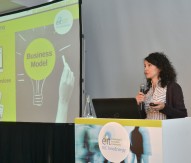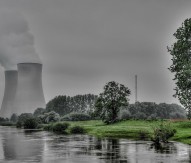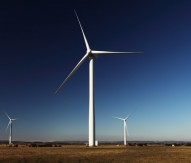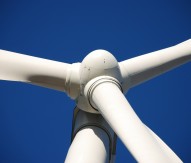
DIBANET: Biofuels in the next FP
The FP7 DIBANET project (Development of Integrated Biomass Approaches NETwork project) was an international global research project investigating biofuels. The investigation, which ran between July 2009 and March 2013, was in response to the Seventh Framework Programme 2008 energy call ‘Significant enhancement of the co-operation between key researchers and industries from the EU and Latin America in the field of biofuels’ and received funding worth €3.7m from the European Commission.
The project, entitled ‘The Production of Sustainable Diesel Miscible Biofuels from the Residues and Wastes of Europe and Latin America’ nurtured closer international collaboration between the two continents; participants included Denmark, Greece, Brazil and Chile. According to the project’s website, the investigation helped to ‘develop technologies to help towards eliminating the need for fossil diesel imports in the EU and Latin America by advancing the art in the production of ethyl-levulinate from organic wastes and residues’.
Speaking to Horizon2020projects.com, Dr Michael Hayes, research professor at the Carbolea Group, based at the University of Limerick in Ireland, gave his thoughts on the next research and innovation framework programme, Horizon 2020, but began by outlining the current state of play in the biofuel sector.
“Until now, the major emphasis on the Second Generation Biorefining (SGB) of lignocellulosic biomass has focused on the production of ethanol from the cellulosic component. Ethanol is, however, a relatively poor fuel and an even worse platform chemical. Levulinic acid (LevA) from the cellulose and furfural the hemicelluloses can provide excellent fuels, fuel additives, and most of the chemicals now sourced in petroleum.”
Hayes continued by outlining the developments of the FP7 DIBANET project and the potential to meet Ireland’s future energy needs.
“During the course of the EU-Latin America FP7 DIBANET project, SGB has been advanced by Carbolea to the extent that LevA can be produced at a cost competitive with Brent Crude Oil. The successful technology is based on a patented pre-treatment process that allows separate recoveries of the cellulose, hemicellulose and lignin components and each of these has significant commercial value. The high quality cellulose recovered is readily converted to LevA in an acid digestion SGB process. The cellulose can also undergo enzymatic hydrolysis and subsequent fermentation to ethanol. The energy crop Miscanthus x giganteus, harvested in the autumn, can yield about 16 tonnes per hectare (including leaves) and provide an income for the farmer that will match that from the most profitable major farming activities at this time. Miscanthus, grown on one fifth of its arable land, can match Ireland’s energy needs now sourced in petroleum imports. Straws, forest thinnings, and many agricultural residues also have the components needed for SGB operations.”
Horizon 2020
Horizon 2020 will dedicate significant resources towards the development of green energy solutions. This will be mainly orchestrated through the ‘secure, clean and efficient energy’ objectives in the Societal Challenges pillar. Hayes said it would be important for the EU to invest in this developing industry, which could bring many other positive externalities to the local economy, fulfilling the objectives of creating sustainable economic growth and new jobs in Europe.
“It will be important for Horizon 2020 to promote this environmentally benign green industry. Bio-refineries located near feedstock sources will supply local green chemical manufacturing industries creating very significant rural employment,” he stated.
Dr Michael Hayes






